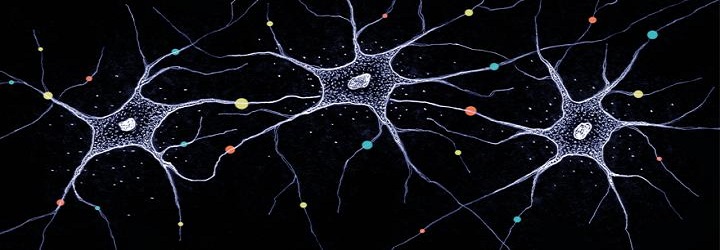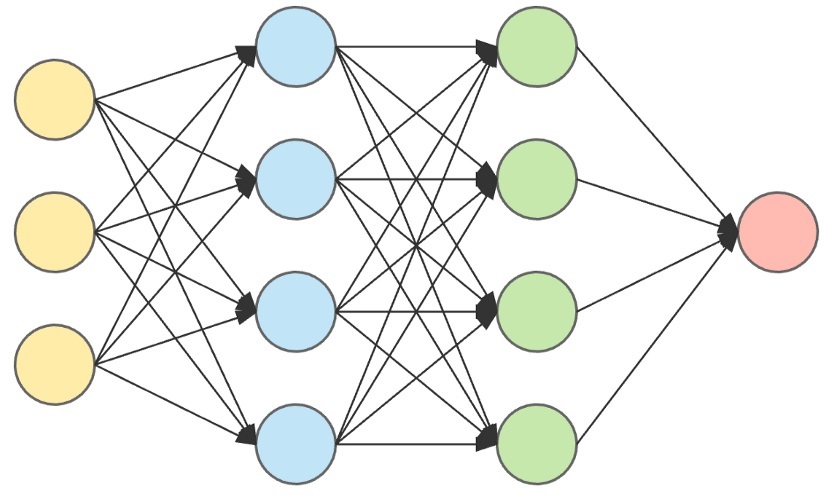Artificial Intelligence
Neural Networks (NN)
Neural Networks is one of the most significant discoveries in history.
Neural Networks can solve problems that can't be solved by algorithms:
- Medical Diagnosis
- Face Detection
- Voice Recognition
Neural Networks is the essence of Deep Learning.
The Deep Learning Revolution
The deep learning revolution is here!
The deep learning revolution started around 2010. Since then, Deep Learning has solved many "unsolvable" problems.
The deep learning revolution was not started by a single discovery. It more or less happened when several needed factors were ready:
- Computers were fast enough
- Computer storage was big enough
- Better training methods were invented
- Better tuning methods were invented
Neurons
Scientists agree that our brain has around 100 billion neurons.
These neurons have hundreds of billions connections between them.

Image credit: University of Basel, Biozentrum.
Neurons (aka Nerve Cells) are the fundamental units of our brain and nervous system.
The neurons are responsible for receiving input from the external world, for sending output (commands to our muscles), and for transforming the electrical signals in between.
Neural Networks
Artificial Neural Networks are normally called Neural Networks (NN).
Neural networks are in fact multi-layer Perceptrons.
The perceptron defines the first step into multi-layered neural networks.
The Neural Network Model
Input data (Yellow) are processed against a hidden layer (Blue) and modified against another hidden layer (Green) to produce the final output (Red).

Neural Networks with JavaScript
Artificial Intelligence can be math-heavy. The nature of neural networks is highly technical, and the jargon that goes along with it tends to scare people away.
This is were JavaScript can come to help. We need easy to understand software APIs to simplifying the process of creating and training neural networks.
JavaScript Libraries
Brain.js
Brain.js is a JavaScript library that makes it easy to understand Neural Networks because it hides the complexity of the mathematics.
Building a neural network with Brain.js.
Introduction to ml5.js
ml5.js is trying to make machine learning more accessible to a wider audience.
The ml5 team is working to wrap machine learning functionality in friendlier ways.
The example below uses only three lines of code to classify an image:
<img id="image" src="pic1.jpg" width="100%">
<script>
const classifier = ml5.imageClassifier('MobileNet');
classifier.classify(document.getElementById("image"), gotResult);
function gotResult(error, results) { ... }
</script>
Try it Yourself »
Try substitute "pic1.jpg" with "pic2.jpg" and "pic3.jpg".
TensorFlow Playground
TensorFlow Playground is a web application written in d3.js.
With TensorFlow Playground you can learn about Neural Networks (NN) without math.
In your own Web Browser you can create a Neural Network and see the result.
TensorFlow.js was previously called Tf.js and Deeplearn.js.
Tom Mitchell
Tom Michael Mitchell (born 1951) is an American computer scientist and University Professor at the Carnegie Mellon University (CMU).
He is a former Chair of the Machine Learning Department at CMU.
E: Experience (the number of times).
T: The Task (driving a car).
P: The Performance (good or bad).
Stories
Giraffe
In 2015, Matthew Lai, a student at Imperial College in London created a neural network called Giraffe.
Giraffe could be trained in 72 hours to play chess at the same level as an international master.
Computers playing chess are not new, but the way this program was created was new.
Smart chess playing programs take years to build, while Giraffe was built in 72 hours with a neural network.
